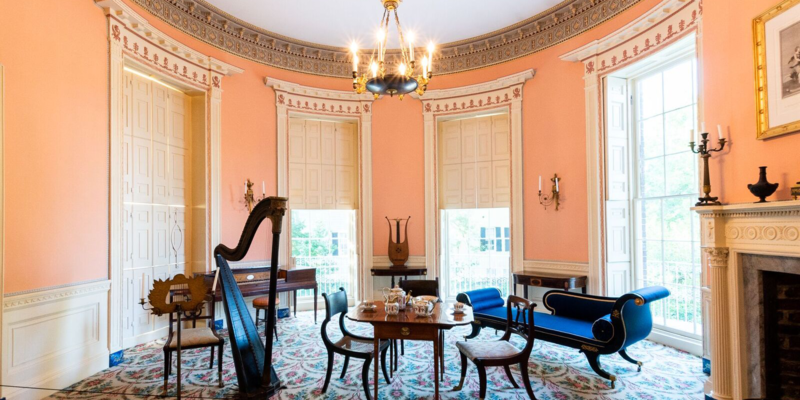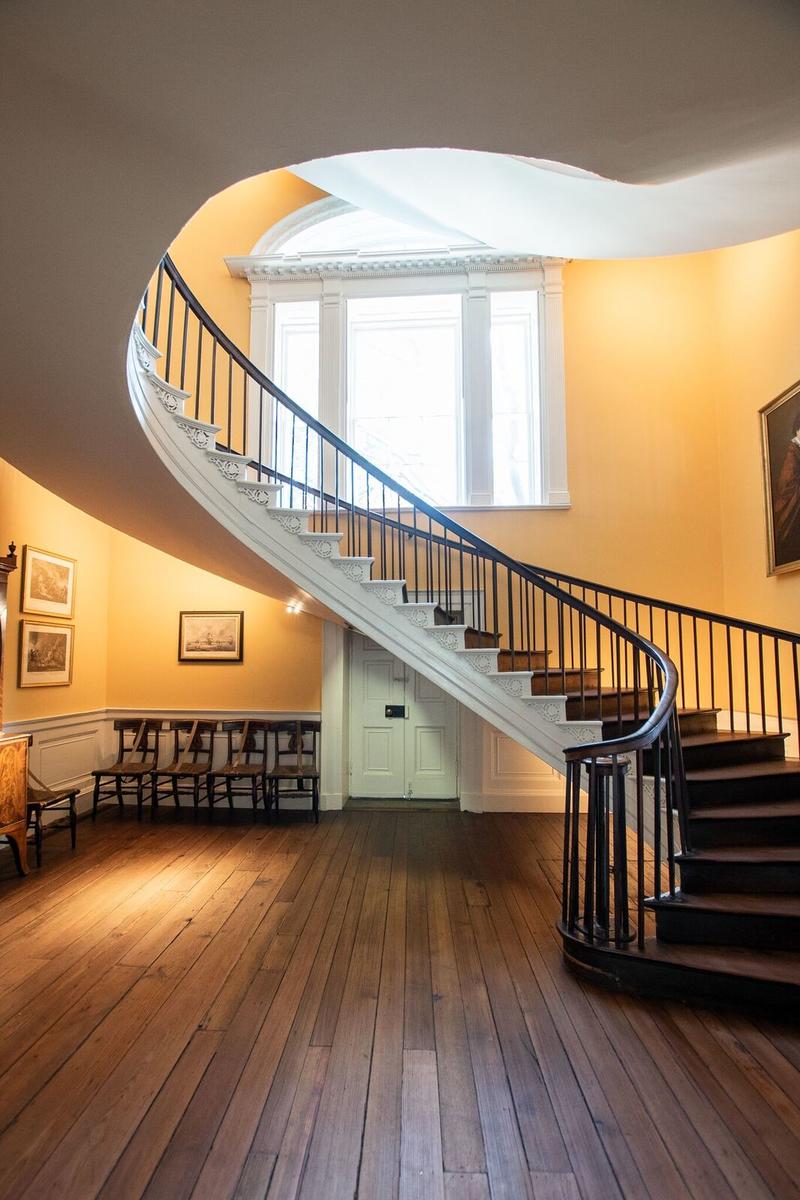
Keely Laughlin Photography
The Nathaniel Russell House is tucked away in the heart of historic downtown at 51 Meeting Street. If you weren’t looking for it, it would be easy to bypass.
Home to Charleston merchant Nathaniel Russell, this family home took five years and $80,000 to build. In 1808, the average value of a home was $262.
The docent-led tours begin in the kitchen and laundry area where the enslaved Africans would spend most of their time. Archaeological finds on the ground are providing insight into adornments worn by the enslaved.
The tour then enters the grand foyer of the house, which is the public part of the home. It is the place where business was conducted during Nathaniel Russell’s life.
While sitting between a pair of two very large doors, the docent gives a little background on the original homeowner.
Nathaniel Russell was born in Bristol, Rhode Island. He trained as a merchant and settled in Charleston in 1765. This was a wealthy time for Charleston, and a particularly lucrative time for merchants.
Most of his profits came from exporting Carolina Gold rice, indigo, tobacco, and cotton. He also participated in the African slave trade.
In 1788, Russell married Sarah Hopton who was the daughter of one of Charleston’s wealthiest pre-Revolutionary era merchants. Oh, and by the way, Russell was 50 when they got married and didn’t move into his large family home until he was 70! They had two daughters.

Keely Laughlin Photography
The centerpiece of the home is the three-story floating staircase. Although now it is supported by steel beams, the cantilevered step system is evident. Looking up, visitors can see a medallion painted onto the ceiling. It's an eye-trick that the owners used often. The crown molding is also painted on.
The curatorial staff have restored the Nathaniel Russell House to its original splendor by using forensic analysis. For example, the curators know that the wall colors in a certain room are a creamy yellow because they painstakingly removed layers upon layers of paint to find the original color.
The artwork is not all original to the home, but it is original from the time period. The home also has indoor shutters which would have been used for privacy and security, but also to protect the furniture from sunlight.
Thanks to Keely Laughlin Photography for the photographs.